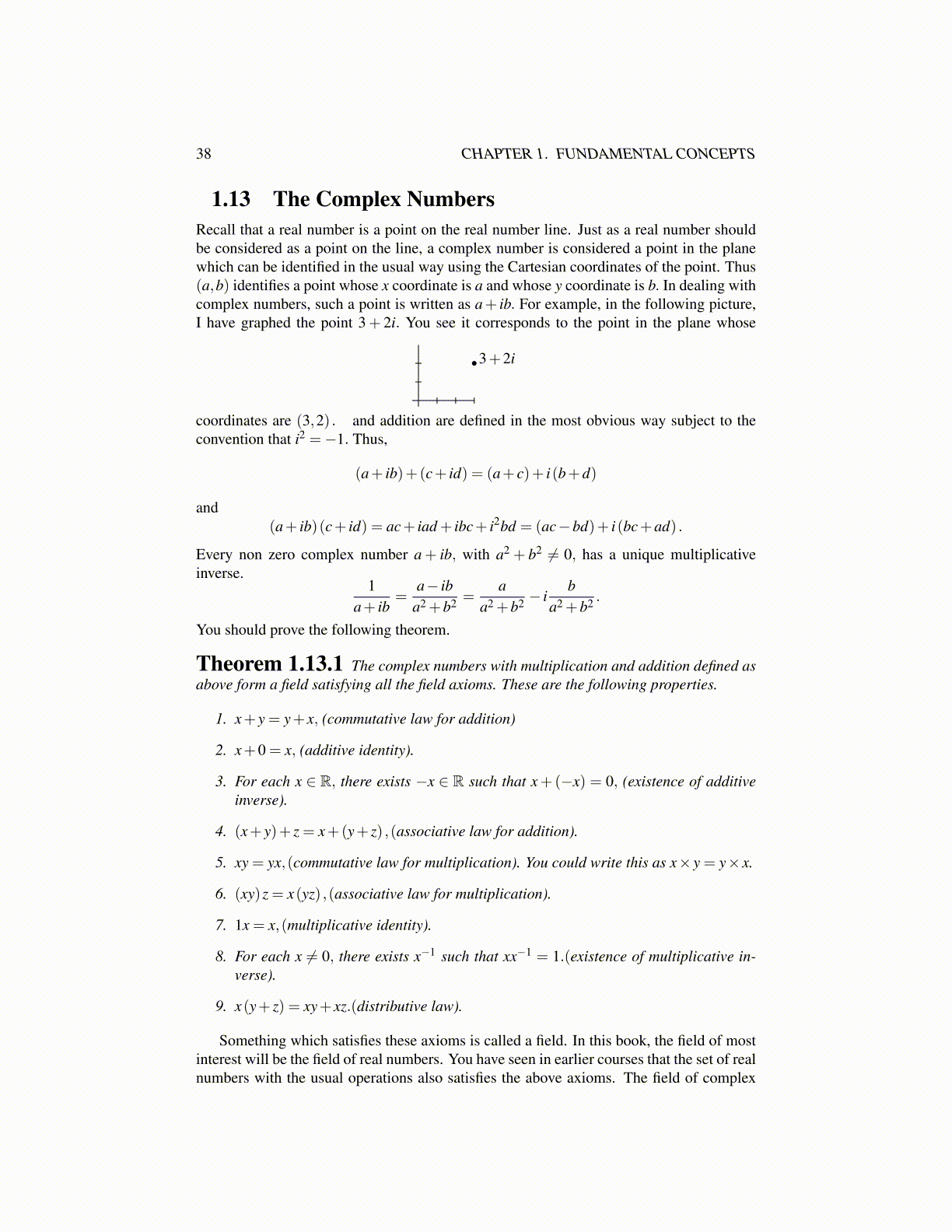
38 CHAPTER 1. FUNDAMENTAL CONCEPTS
1.13 The Complex NumbersRecall that a real number is a point on the real number line. Just as a real number shouldbe considered as a point on the line, a complex number is considered a point in the planewhich can be identified in the usual way using the Cartesian coordinates of the point. Thus(a,b) identifies a point whose x coordinate is a and whose y coordinate is b. In dealing withcomplex numbers, such a point is written as a+ ib. For example, in the following picture,I have graphed the point 3+ 2i. You see it corresponds to the point in the plane whose
coordinates are (3,2) .
3+2i
and addition are defined in the most obvious way subject to theconvention that i2 =−1. Thus,
(a+ ib)+(c+ id) = (a+ c)+ i(b+d)
and(a+ ib)(c+ id) = ac+ iad + ibc+ i2bd = (ac−bd)+ i(bc+ad) .
Every non zero complex number a + ib, with a2 + b2 ̸= 0, has a unique multiplicativeinverse.
1a+ ib
=a− ib
a2 +b2 =a
a2 +b2 − ib
a2 +b2 .
You should prove the following theorem.
Theorem 1.13.1 The complex numbers with multiplication and addition defined asabove form a field satisfying all the field axioms. These are the following properties.
1. x+ y = y+ x, (commutative law for addition)
2. x+0 = x, (additive identity).
3. For each x ∈ R, there exists −x ∈ R such that x+(−x) = 0, (existence of additiveinverse).
4. (x+ y)+ z = x+(y+ z) ,(associative law for addition).
5. xy = yx,(commutative law for multiplication). You could write this as x× y = y× x.
6. (xy)z = x(yz) ,(associative law for multiplication).
7. 1x = x,(multiplicative identity).
8. For each x ̸= 0, there exists x−1 such that xx−1 = 1.(existence of multiplicative in-verse).
9. x(y+ z) = xy+ xz.(distributive law).
Something which satisfies these axioms is called a field. In this book, the field of mostinterest will be the field of real numbers. You have seen in earlier courses that the set of realnumbers with the usual operations also satisfies the above axioms. The field of complex